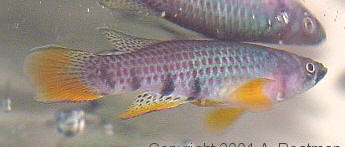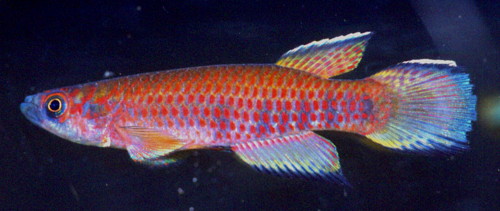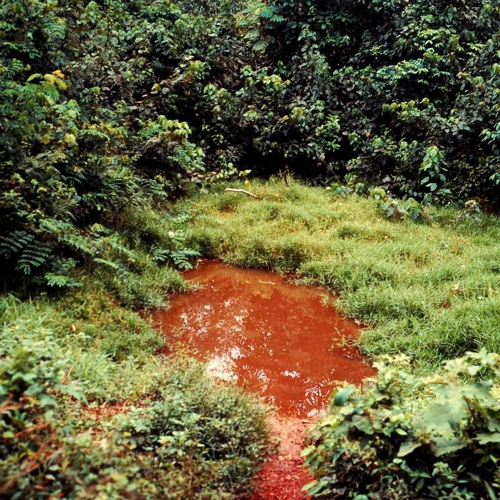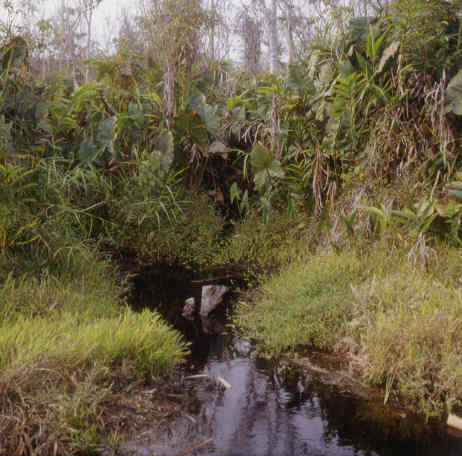Epiplatys chaperi chaperi (Sauvage 1882)
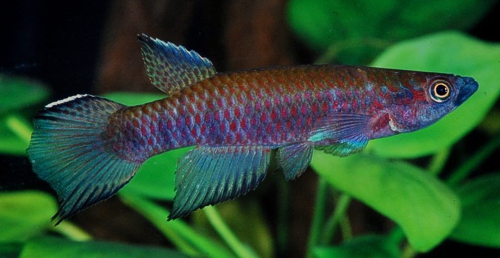
E.chaperi Awaso. Wild male. Photo courtesy of Ed Pürzl.
| Meaning of Name |
After Mr. E.Chaper the original collector. |
||
| First Description |
Sauvage M.H.E. 1882. Notice sur les poissons du territoire d'Assinie (Cote d'Or) Mission Scientifique de M.Chaper). Bulletin de la Société Zoologique de France 7: p 323-324, plate 5, figure 4-5. |
||
| Size |
7.5 cm |
||
| Meristics |
|
||
| Karyotype |
n = 25, A = 28 (Scheel 1974) |
||
| Sub-Genus |
Epiplatys |
||
| Group |
chaperi |
||
| Synonyms |
|
||
Populations
|
Angona (Agona). First brought into the UK by the BKA from a David Blair collection around 1970. Imported again by BKA Species Import in June 1974.
Awaso -
|
||
| Type Locality |
Kouakouro (southeastern Ivory Coast) |
||
| Distribution |
A species endemic to the coastal lowlands of the east of Ivory Coast into Ghana. http://homepage.uibk.ac.at/homepage/c102/c102mr/epiplaty/chaperi.htm |
||
| Habitat |
Shallow areas of swamps, brooks & rivers in rainforested areas. They have also been collected in savannah biotopes
|
||
| Distinguishing Characteristics |
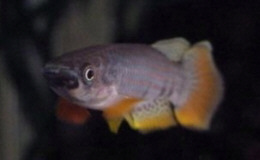 E.chaperi Angona showing dark chin. Photo courtesy of Allen Boatman. |
||
| Colour/Pattern Variability | |||
| History |
In 1882 the Frenchman Sauvage described the species as Haplocheilus chaperi from 8 specimens collected at Couacrou (also spelt Kouakro) which is situated in swamps at the base of the Assinie Lagoon, at the bottom of Aby Lagune but 16 miles east of the northern most part of the lagoon. eastern Ivory Coast. In 1895 this species was synonymised by Garman with H.senegalensis Steindachner 1870. This was later discredited. On 13th January 1908 a shipment arrived at Siggelkow,
in Hamburg probably from Monrovia, Liberia. J.P.Arnold had fish from
this shipment which were called various names until Boulenger identified
them as chaperi. Boulenger mentions in his catalogue of African
Fishes that he received fish from Arnold & that they came from Sierra
Leone (not Monrovia, Liberia).
E.chaperi & E.dageti have often been confused in the past partly due to Boulenger mis-identifying fish collected at Monrovia, Liberia ( 1908 ) as E.chaperi when they were E.dageti. In 1942 L.P.Schultz in the USA reported chaperi in preserved material collected near Harbel & Monrovia, Liberia. Daget in 1948 reported this species from Yapo & the Banco of Ivory Coast. Scheel considered this data to need further investigation. In 1964 Daget & Arnoult examined the type
material in Paris & determined Sauvage's true identity for E.chaperi.
|
||
| Breeding Notes |
An easy species to breed. Water incubation takes
around 14 days. Sexual maturity comes around 5 months. A report in BKA newsletter No. 86, October 1972 covered the first introduction of the Angona population. Males were found to be very aggressive towards each other. Larger tanks than normal should be used for breeding. Males were observed to be hard drivers on females. Eggs were amber in colour & hatched in 14 days at a temperature of 20°C. Fry were large & able to take newly hatched brine shrimp. Growth rate was fairly rapid but sex differences were not easily observed until they reach 5-6 months of age. |
||
| Diameter of Egg | |||
| Remarks |
|
